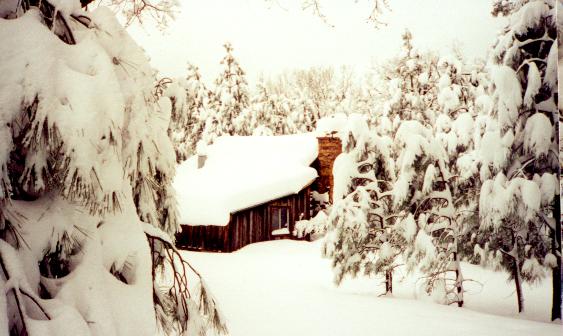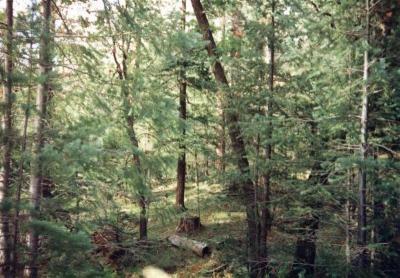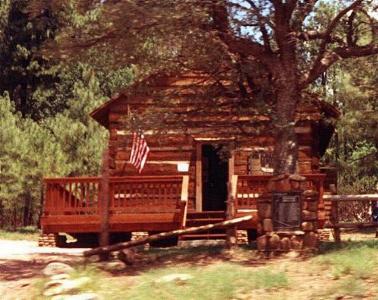
No one knows the exact date of settlement of this small village that lies beneath the famed Mogollon Rim; for that matter, Indians have lived near here for centuries. 
Another perk is the fact that because the elevation is 6,047 feet, the temperature stays moderate all year round. The hottest part of the summer, with temperatures elsewhere of 95 degrees to 105 degrees, is only a mild summer day in Strawberry; the temperature rarely rises above 85 degrees. In winter, although snow is not uncommon, temperatures may rise that same day to nearly 60 degrees. With the low humidity that is common throughout Arizona, you may find yourself thinking that you have landed in Paradise.
A large draw to the area are the numerous lakes (7, to be exact) that lie on top of the Mogollon Rim, 
Although the main sources of revenue come from the weekend and summer visitors to the area, the year-round population of Strawberry and Pine (the nearest town down the mountain) is about 3,600 people, according to 1993 estimates. That number swells in the summer months to almost 5,000 people.
Strawberry has some amenities, including a grocery market with "a little bit of everything" and an array of motels and resturants. In Pine, there are more businesses catering to the tourists and residents alike. For instance, there are gas stations, real estate agencies, and a post office that Pine and Strawberry share. And in the nearest "big" town, Payson, there are medical facilities, a Wal-Mart, and numerous other places to shop and eat.
The history of Strawberry is a varied one. Indians such as the Tonto Apaches and the Southeastern Yavapai inhabited the Strawberry area until the 1860's, when the Civil War and increased armed soldiers in the area forced the Indians to disperse. When these armies came through the area, General George Crook in their lead, they blazed new trails and roads to an otherwise uninhabited area.

Gold was discovered in the Strawberry area around 1875 and that began the influx of settlers to the area. Mormon settlement began in 1878 and continued until 1890. It was these first settlers that gave Strawberry its colorful name, taken from the numerous wild strawberries that inhabited the area. Because of the rough topography of the area, settlers found it almost impossible to come from the north into Strawberry until around 1878. Therefore, most settlement up to this time came from the south. After that, new trails were pounded and settlement began to increase from the northern reaches of the state.
Settlers to this new land found quickly that they had to become self-sufficient to survive. To this end, they used the local streams to provide power to saw mills and grist mills. They dug irrigation ditches to water their crops in those very fertile valleys. They also grazed cattle to earn money, a process which continued until 1905, when range management laws stopped cattle grazing to protect the watershed of the area.
Most of Strawberry's settlers arrived in 1882. One such settler named Charles C. Callaway exemplified the typical Strawberry settler. He arrived from Missouri in 1882 to visit a friend who lived in Strawberry. While on his way to his friend's house, he got lost and received directions from a bearded stranger on a mule (later identified as General George Crook). Once Charlie arrived in Strawberry and saw the beautiful pine trees and felt the cool mountain air, he decided he couldn't leave.
Charlie became a cowboy and worked on various ranches in Strawberry Valley. In 1885, he helped build the Strawberry schoolhouse, which still stands and is now the oldest schoolhouse in Arizona. 
That pioneering spirit lives on in the inhabitants of the modern-day Strawberry. Most of the year-round residents have a fierce independence that they fight to uphold. Most residents are transplants from other areas of the country and have come to Strawberry for the freedoms and laid-back life it gives them. That independence is what this country was built on and that is what will keep this area strong in years to come.
So come visit us in Strawberry, Arizona, you won't be sorry you did.
Information drawn from the following sources:
1. "A Brief History of Pine and Strawberry, Arizona"----Dr. Robert F. Anderson and Beverly M. Anderson
2. "Pine/Strawberry, Arizona"----Matthieu Denuelle, Kirsten Laun, and Karen Peters